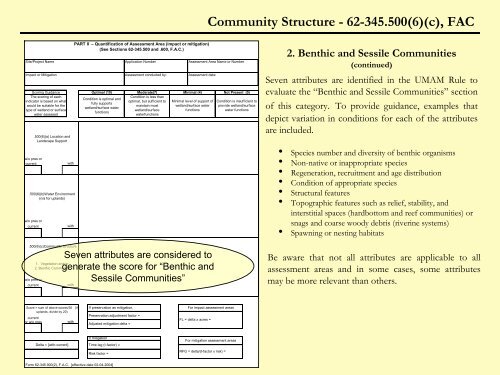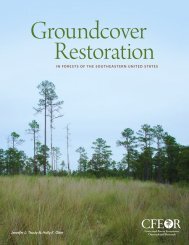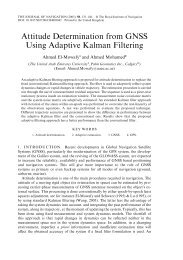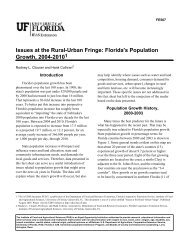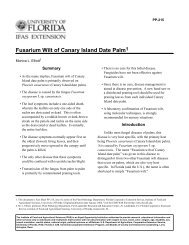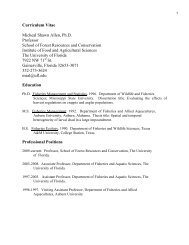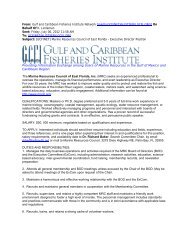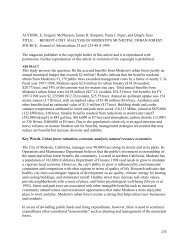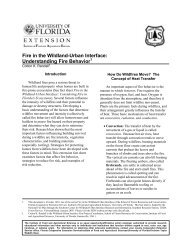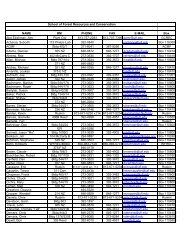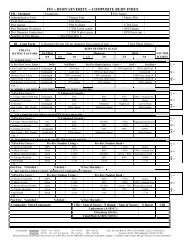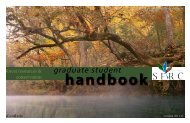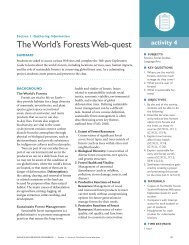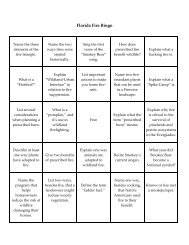Uniform Mitigation Assessment Method TRAINING MANUAL
Uniform Mitigation Assessment Method TRAINING MANUAL
Uniform Mitigation Assessment Method TRAINING MANUAL
You also want an ePaper? Increase the reach of your titles
YUMPU automatically turns print PDFs into web optimized ePapers that Google loves.
Community Structure - 62-345.500(6)(c), FAC<br />
Scoring Guidance<br />
The scoring of each<br />
indicator is based on what<br />
would be suitable for the<br />
type of wetland or surface<br />
water assessed<br />
w/o pres or<br />
current<br />
w/o pres or<br />
current<br />
w/o pres or<br />
current<br />
PART II – Quantification of <strong>Assessment</strong> Area (impact or mitigation)<br />
(See Sections 62-345.500 and .600, F.A.C.)<br />
Site/Project Name Application Number <strong>Assessment</strong> Area Name or Number<br />
Impact or <strong>Mitigation</strong><br />
.500(6)(a) Location and<br />
Landscape Support<br />
with<br />
.500(6)(b)Water Environment<br />
(n/a for uplands)<br />
with<br />
.500(6)(c)Community structure<br />
1. Vegetation and/or<br />
2. Benthic Community<br />
Optimal (10)<br />
Condition is optimal and<br />
fully supports<br />
wetland/surface water<br />
functions<br />
<strong>Assessment</strong> conducted by:<br />
Moderate(7) Minimal (4)<br />
Condition is less than<br />
optimal, but sufficient to<br />
maintain most<br />
wetland/surface<br />
waterfunctions<br />
<strong>Assessment</strong> date:<br />
Minimal level of support of<br />
wetland/surface water<br />
functions<br />
Seven attributes are considered to<br />
generate the score for “Benthic and<br />
Sessile Communities”<br />
with<br />
Not Present (0)<br />
Condition is insufficient to<br />
provide wetland/surface<br />
water functions<br />
2. Benthic and Sessile Communities<br />
(continued)<br />
Seven attributes are identified in the UMAM Rule to<br />
evaluate the “Benthic and Sessile Communities” section<br />
of this category. To provide guidance, examples that<br />
depict variation in conditions for each of the attributes<br />
are included.<br />
• Species number and diversity of benthic organisms<br />
• Non-native or inappropriate species<br />
• Regeneration, recruitment and age distribution<br />
• Condition of appropriate species<br />
• Structural features<br />
• Topographic features such as relief, stability, and<br />
interstitial spaces (hardbottom and reef communities) or<br />
snags and coarse woody debris (riverine systems)<br />
• Spawning or nesting habitats<br />
Be aware that not all attributes are applicable to all<br />
assessment areas and in some cases, some attributes<br />
may be more relevant than others.<br />
Score = sum of above scores/30 (if<br />
uplands, divide by 20)<br />
current<br />
or w/o pres<br />
with<br />
If preservation as mitigation,<br />
Preservation adjustment factor =<br />
Adjusted mitigation delta =<br />
For impact assessment areas<br />
FL = delta x acres =<br />
Delta = [with-current]<br />
If mitigation<br />
Time lag (t-factor) =<br />
Risk factor =<br />
For mitigation assessment areas<br />
RFG = delta/(t-factor x risk) =<br />
Form 62-345.900(2), F.A.C. [effective date 02-04-2004]


